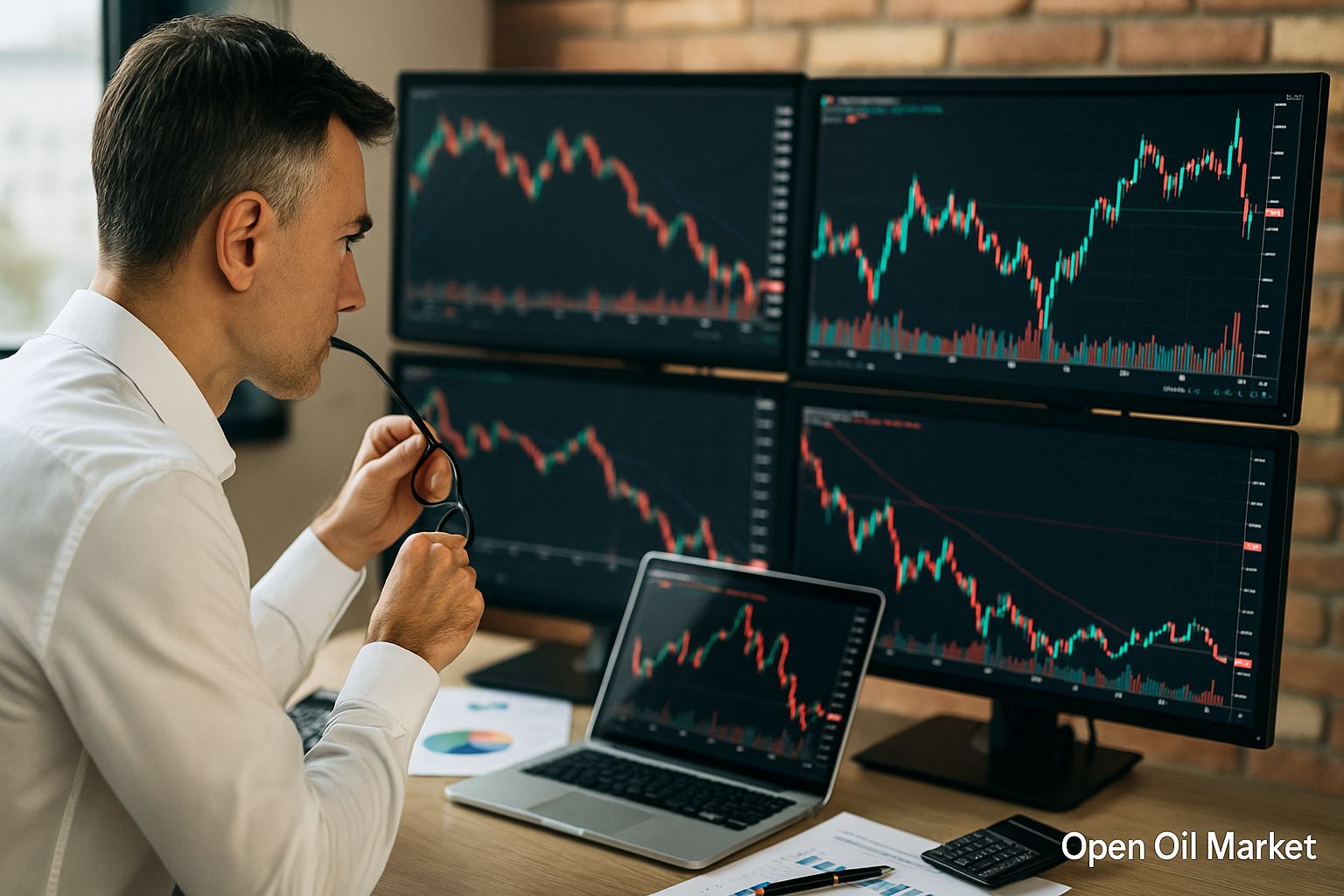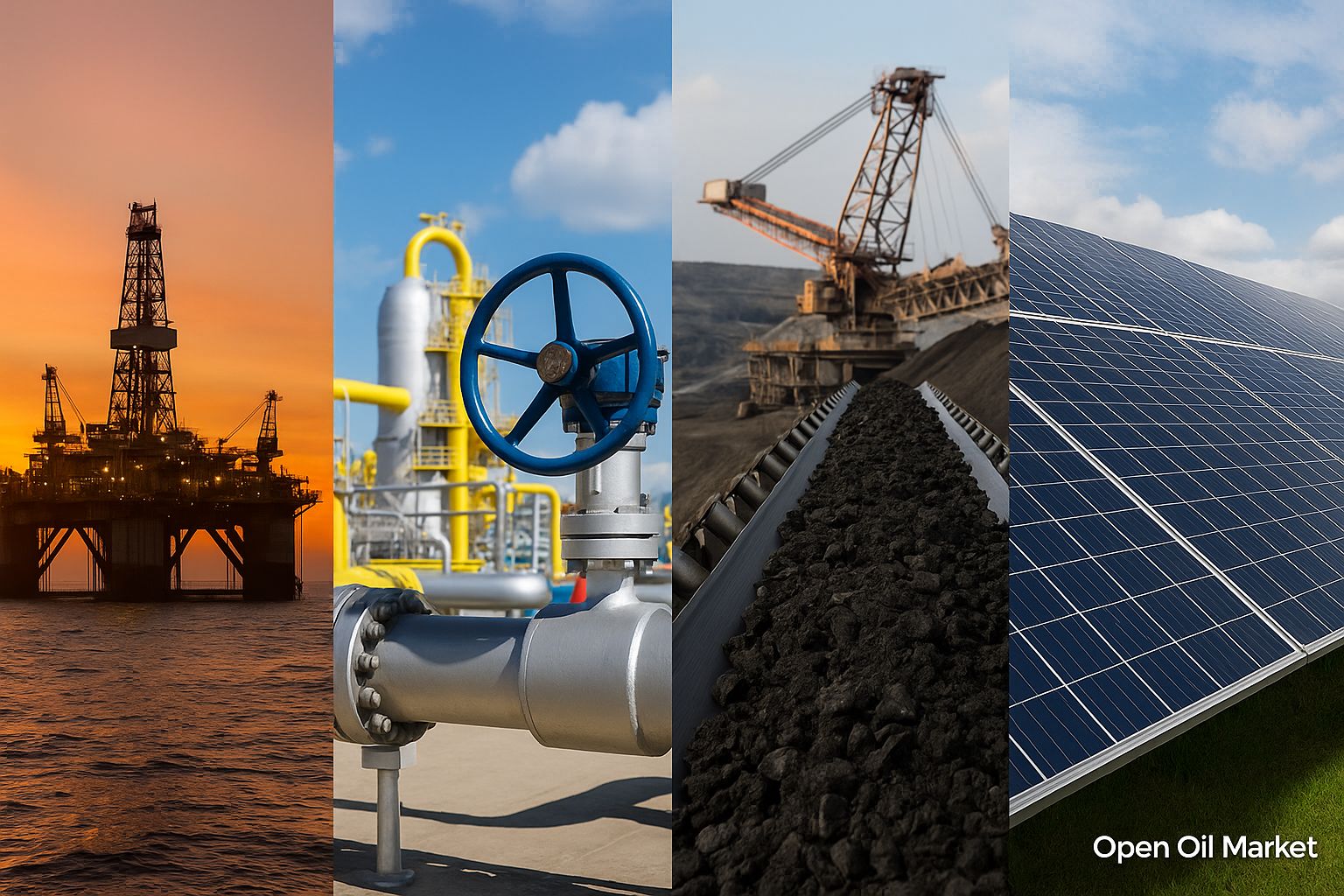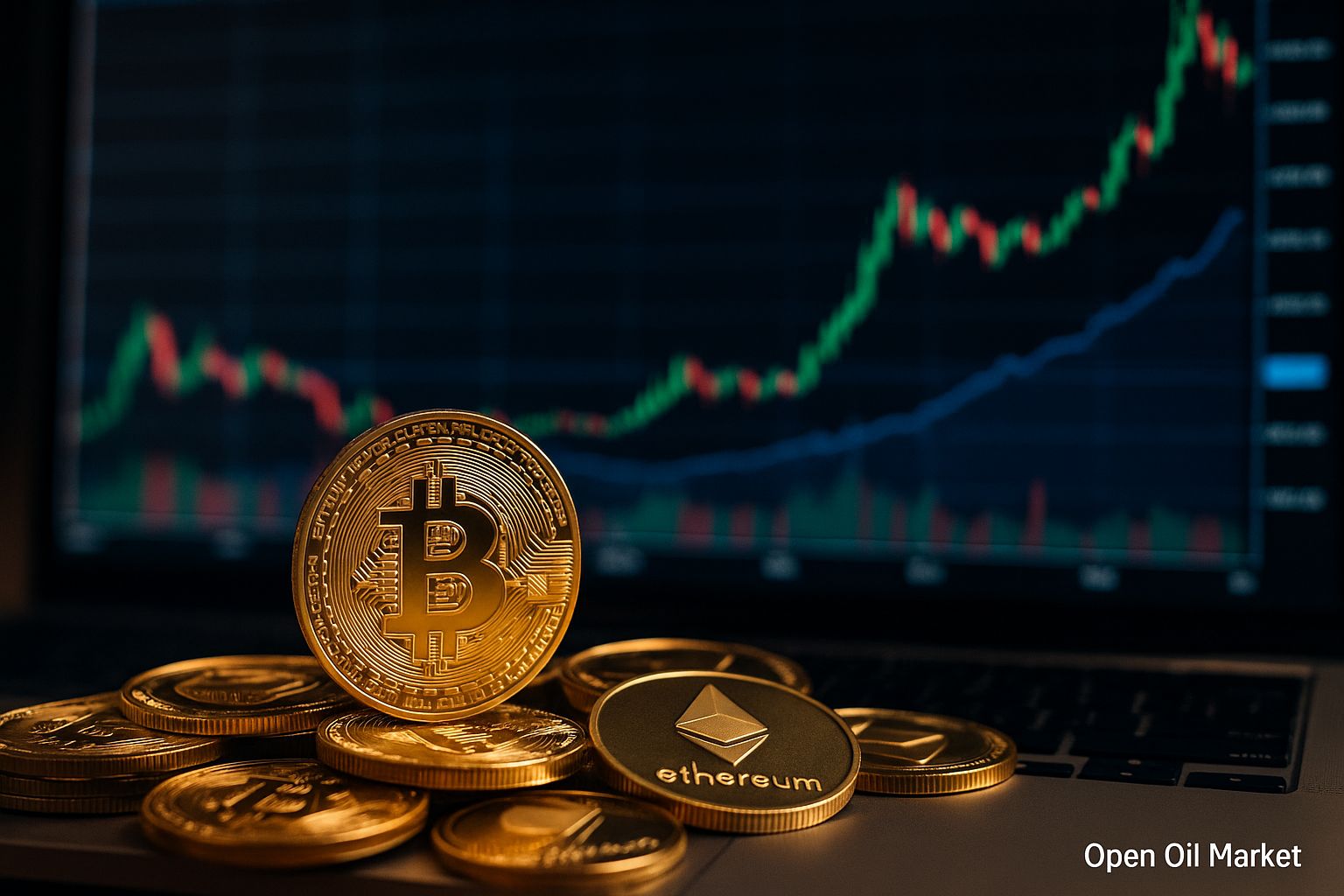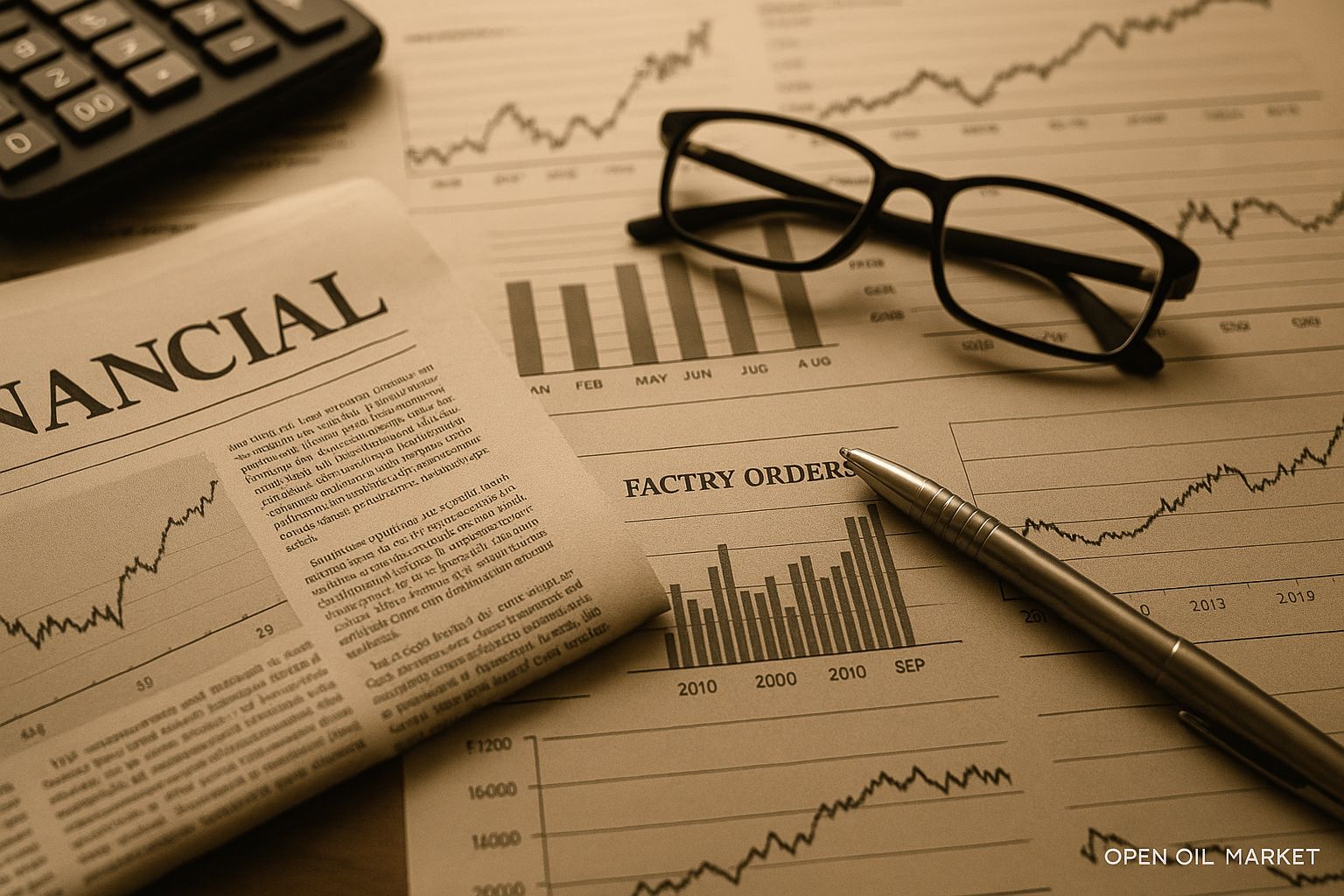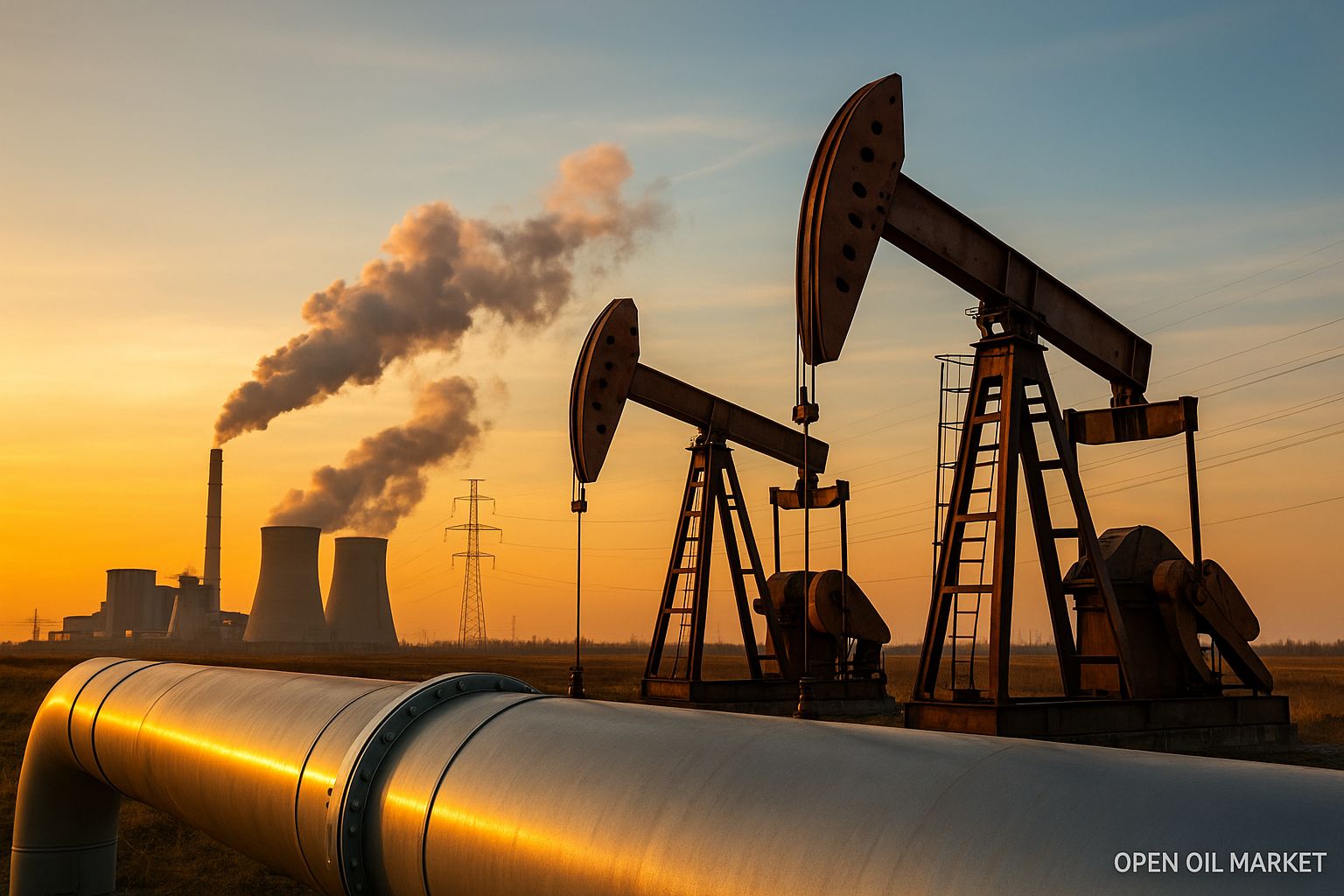
Current News in the Energy Sector as of 22 September 2025: Stable Oil and Gas Prices, New EU Sanctions Against Russian LNG, OPEC+ Plans, Energy Situation in Europe and Asia, Measures to Stabilise the Russian Fuel Market
Current events in the fuel and energy sector (TEK) on 22 September 2025 exhibit a simultaneous stabilisation of markets and a maintenance of geopolitical tension. Global oil and gas markets remain relatively calm: oil prices are hovering around stable levels (Brent at approximately $66 per barrel, WTI around $63), reflecting a fragile balance between supply and demand. The European gas market enters autumn with a robust stockpile – underground gas storage facilities in the EU are reportedly filled to about 90%, providing a buffer before the winter season and maintaining prices at moderate levels (~€32/MWh, or around $380 per thousand cubic metres). Against this backdrop, the pressure of sanctions is intensifying: the European Union has announced a new (the 19th) sanctions package against Moscow, which includes a complete embargo on the import of Russian liquefied natural gas (LNG) starting from 2027 – a year earlier than previously planned. At the same time, dialogue continues among world powers: despite the absence of breakthrough agreements, communication channels remain open, leaving a slight chance for a long-term reduction in confrontation.
Meanwhile, the global energy transition is gaining momentum: various regions are recording new records in electricity generation from renewable sources, although energy systems still rely on traditional resources to ensure stability. In Russia, after a summer spike in fuel prices, authorities are maintaining manual control over the domestic market – export restrictions and support measures have been extended to normalise the situation. Below is a detailed overview of key news and trends in the oil, gas, electricity, and raw materials sectors as of this date.
Oil Market: Supply Growth and Weak Demand Restrain Prices
Global oil prices are demonstrating relative stability amid a moderately bearish trend, influenced by fundamental factors. The North Sea Brent is trading around $66 per barrel, while the American WTI is approximately $62–63. Current price levels are 10–12% lower than a year ago, reflecting a gradual weakening of the oil market following the peak rally of 2022–2023. The price dynamics are simultaneously influenced by several factors:
- OPEC+ Supply Increase. The oil alliance continues to systematically increase market supplies, gradually rolling back previous restrictions. At the beginning of September, at the OPEC+ ministerial meeting, it was confirmed that from October 2025, the collective production quota will be increased by approximately 137,000 barrels per day, continuing the course to return previously withdrawn volumes to the market. From April to September, alliance countries have already added around 1.5 million barrels per day collectively, though the announced targets were even higher. Concurrently, non-OPEC+ countries such as the USA, Brazil, Canada, and others are producing at maximum levels, setting new records. Thus, global oil supply in 2025 is anticipated to grow at a faster pace – estimated at over 2.5 million barrels per day for the year.
- Slowing Demand Growth. Global oil consumption is increasing significantly slower than in previous years. The International Energy Agency (IEA) forecasts a demand increase in 2025 of only about 0.7 million barrels per day, and in 2026, a comparable figure, which essentially indicates a plateau in consumption. Developed economies are experiencing stagnation or even a decline in demand in the second half of the year, while in developing countries, growth does not meet expectations. Key reasons include weakened economic activity (particularly noticeable in China), energy conservation measures following a period of high prices, and seasonal factors (demand traditionally decreases in the autumn months, moreover, refineries in many countries transition to planned maintenance).
- Geopolitics and Sanctions. Increased sanction pressure and persistent uncertainty in relations between major powers create a contradictory backdrop for the oil market. On one hand, previously imposed restrictions (EU embargo on Russian oil products, price caps, etc.) have not yet led to a sharp contraction in physical exports from Russia – Russian oil continues to find markets in Asia, keeping global supply high. On the other hand, ongoing discussions of new sanctions and escalation risks (e.g., the discussed US implementation of 100% tariffs on all Chinese exports if Beijing continues to purchase Russian hydrocarbons) limit investor appetite in the oil sector. Overall, geopolitical factors do not provide prices with an upward impetus, yet they also do not cause a panic collapse – the market has priced in most known risks.
The overall impact of the mentioned factors ensures that supply surpasses demand in the global oil market, which restrains prices from rising anew. Global commercial oil inventories have been steadily increasing for several months – according to the IEA, global inventories have risen by approximately 187 million barrels since the beginning of the year and are gradually approaching multi-year average levels. Oil prices remain in a narrow range and are significantly below last year’s highs. Several analysts believe that if current trends persist, by 2026 the average price of Brent may drop closer to $50 per barrel. However, the future trajectory of prices will depend on the balance between production cuts by major players (in the event of excessive supply) and a potential revival in demand if the global economy receives new stimuli for growth.
Gas Market: Europe Enters Winter with Filled Storage
The gas market is primarily focused on Europe, which in 2025 significantly strengthened its energy security ahead of the winter period. EU countries have rapidly filled underground gas storage facilities (UGS) throughout the summer, and by the end of September, the fill level exceeded 90% of total capacity – the target set for early November has been reached ahead of schedule. Comfortable gas reserves allow European consumers to feel more secure: even with increased fuel withdrawal during winter, the risk of shortages is significantly reduced.
Exchange prices for gas in Europe remain at moderate levels. October futures at the TTF hub are trading close to €32/MWh, equivalent to around $380 per thousand cubic metres – significantly lower than during the peak of the 2022 crisis. This price stability is explained by a balance between supply and demand. As autumn arrives, European demand for gas remains restrained due to mild weather and the continuation of energy-saving measures, while the supply is abundant. Liquefied natural gas shipments to the EU continue to be high: following a slight decline over the summer due to a surge in Asian imports, September has seen a renewed increase in LNG inflow to Europe amidst weakened demand in Asia. The completion of scheduled maintenance at Norwegian fields also adds confidence in supply stability. Consequently, the European gas market enters the autumn-winter season without panic and with a favourable outlook, although market participants remain vigilant regarding weather conditions and the situation in Asia – unexpected cold snaps or a new spike in Asian demand could disrupt the current calm.
International Politics: Sanctions Pressure Intensifies, Dialogue Continues
The geopolitical agenda of September brings mixed signals for the energy market. On one hand, the West is intensifying sanctions pressure on Russia. On 19 September, the European Commission announced preparations for the 19th sanctions package, which includes rapidly implementing a ban on imports of Russian liquefied natural gas – the LNG embargo is now planned to start on 1 January 2027 (previously, the target date was 2028). This step, largely driven by the USA, aims to reduce Moscow's income from energy resource trade, which supports its economy in the context of the conflict. Brussels signals its determination to "turn off the tap" on Russian gas, even though direct pipeline supplies to the EU have already been minimised.
On the other hand, limited dialogue between key players is still maintained. The meeting between the presidents of Russia and the USA, held in August in Alaska, while it did not lead to a breakthrough, opened the door for further consultations at the expert level. In the following weeks, the parties exchanged visits of working groups discussing specific issues related to energy security and the sanctions regime. So far, no real concessions have occurred: the existing US and EU sanctions against the Russian oil and gas sector remain fully in effect, and Washington has previously explicitly stated its readiness to impose new restrictions (up to the mentioned 100% tariffs against Beijing if it does not reduce cooperation with Moscow). Nevertheless, the very fact that contacts continue somewhat reduces the level of tension – markets hope that, in the event of successful dialogue, the harshest measures could be avoided. In the near future, investors will be closely watching the further developments: progress in negotiations could improve sentiment in the commodity markets, while a communication failure threatens a new round of escalating sanctions.
Asia: India and China Balancing Between Imports and Domestic Production
- India: Faced with pressures from Western sanctions and constraints, New Delhi has taken a pragmatic position in the energy sector. The sharp reduction in imports of Russian oil and gas is viewed by the Indian leadership as unacceptable due to the key role these supplies play in the country's energy security. Indian oil refiners have managed to negotiate more favourable terms: Russian companies are offering significant discounts on Urals oil (estimated at around $5 to the Brent price), allowing the flow of supplies to continue. Consequently, India continues to actively purchase Russian oil at preferential prices, as well as increasing imports of oil products from Russia to meet growing domestic demand. Concurrently, the government is undertaking strategic steps to reduce dependency on imports in the long term. Prime Minister Narendra Modi announced the launch of a national deep-water oil and gas exploration programme on Independence Day (15 August). Under this initiative, the state company ONGC has begun drilling ultra-deep wells (up to 5 km) in the Andaman Sea; initial results are deemed promising. This "deep-water mission" aims to stimulate the discovery of new hydrocarbon reserves and bring India closer to the goal of gradually achieving energy self-sufficiency.
- China: Asia's largest economy continues to balance between increasing energy consumption and a desire to enhance domestic production. Chinese importers remain the leading buyers of Russian energy resources: Beijing has not joined Western sanctions and has seized the opportunity to increase purchases of oil and LNG at beneficial prices. According to China's customs statistics, in 2024, China imported about 212.8 million tonnes of oil and 246.4 billion cubic metres of natural gas – these volumes increased by 1.8% and 6.2%, respectively, compared to the previous year. In 2025, imports from Russia remain at a high level, although growth rates have slowed due to the high base. Concurrently, Beijing is steadily increasing its oil and gas production: from January to August 2025, national companies extracted 144.9 million tonnes of oil (+1.5% year-on-year) and 173.7 billion cubic metres of gas (+6.1%). The increase in domestic production helps partially offset the increased demand but does not eliminate dependence on imports. Chinese oil and gas giants are investing heavily in the development of new fields and the modernisation of refining capacities – in particular, Sinopec is implementing a large-scale project to modernise its petrochemical complex in Xinjiang to increase fuel and petrochemical production. However, considering the colossal scale of the Chinese economy, China's dependence on energy resource imports remains significant: analysts estimate that in the coming years, the country will import no less than 70% of its consumed oil and around 40% of gas. Thus, India and China – the two largest Asian consumers – will continue to play a key role in global raw material markets, combining import supply strategies with active development of their resource bases.
Energy Transition: Growth of Green Generation and the Role of Traditional Energy
The global transition to clean energy sources is continuing to accelerate, setting new records. In the European Union, by the end of 2024, total generation from solar and wind power plants surpassed electricity generation from coal and gas power stations for the first time. This trend continued in 2025: the commissioning of new renewable energy capacities allows for further growth in the share of green electricity, while the share of coal in the EU's energy balance is decreasing after a brief increase during the crisis of 2022–2023. In the USA, renewable energy is also hitting historical highs: at the beginning of 2025, over 30% of total generation came from renewables, and for the first time, the combined output of wind and solar exceeded generation from coal power plants. China, the leader in installed renewable capacities, adds tens of gigawatts of new solar panels and wind turbines annually, continuously breaking records for green generation. According to the IEA, global investments in the energy sector in 2025 will exceed $3 trillion, with more than half of these funds directed towards clean energy projects, grid infrastructure modernisation, and energy storage systems. The world's largest energy companies and financial funds are actively reallocating capital in favour of low-carbon technologies, seeing them as a key driver of future growth.
At the same time, the task of maintaining supply reliability is becoming a priority as the share of variable renewable sources increases. Countries are hesitant to completely abandon traditional generation, recognising the necessity of backup during periods when the sun does not shine and the wind calms. In several regions of Europe during the winter of 2024/25, there was a brief increase in generation from coal power plants during cold, windless periods – despite the environmental costs, this helped avoid electricity shortages. Governments in many countries are investing in the development of storage systems (industrial batteries, pumped storage facilities) and smart grids capable of flexibly managing loads. These measures aim to improve the resilience of energy systems as the share of renewables grows. Experts forecast that by 2026–2027, renewable sources may become the leading source of electricity generation globally, finally surpassing coal. However, in the coming years, the need for traditional power plants to cover peaks and emergencies will persist. Thus, the energy transition is entering a new phase: green energy is setting records and attracting investments, but maintaining a balance with traditional generation remains critically important for energy security.
Coal: High Demand in Asia and Relative Market Equilibrium
The global coal market is still characterised by significant levels of consumption and production, remaining an important part of the global energy balance. Despite the rapid development of renewable energy, demand for coal remains robust, especially in the Asia-Pacific region. Economic growth and electricity needs in Asian countries support the intensive use of this fuel. China, the world's largest consumer and producer of coal, is burning coal nearly at record levels in 2025. Chinese mines extract over 4 billion tonnes of coal annually, covering the lion's share of domestic needs; this volume barely suffices to meet peak loads (for example, during hot summers with widespread air conditioning use). India, with significant coal reserves, is also increasing its coal usage: over 70% of the country's electricity is still generated at coal power plants, and absolute coal consumption is rising in tandem with economic development. Other developing Asian nations (Indonesia, Vietnam, Bangladesh, etc.) are implementing projects to build new coal power stations to meet the growing energy consumption of their populations and industries.
On the supply side, major coal exporters – Indonesia, Australia, Russia, South Africa – have increased their production and external shipments of thermal coal in recent years, adjusting to the persistent high demand. This has helped prevent extreme price fluctuations in the coal market. Following price peaks in 2022, thermal coal quotations have returned to more normal levels and in recent months have remained relatively stable, fluctuating within a narrow range. The balance of supply and demand appears close to equilibrium: consumers reliably obtain the necessary fuel, while producers see stable sales at acceptable prices. Despite various countries' statements about plans to reduce coal use for climate goals in the long term, in the short term, this resource remains indispensable for providing electricity to billions of people. Experts believe that in the next 5–10 years, coal generation, especially in Asia, will retain significant importance, even amid global decarbonisation efforts. Thus, the coal sector is currently experiencing a period of relative balance: demand is consistently high, prices are moderate, and the industry continues to serve as one of the pillars of the global energy system.
The Russian Fuel Market: Measures to Stabilise Fuel Prices
Active government intervention in the Russian domestic fuel market continues with the aim of normalising the pricing situation. In the first half of August, wholesale exchange prices for gasoline and diesel in the country reached new historical highs, exceeding even the records of the previous year, 2023. This occurred against a backdrop of high seasonal demand (summer transportation, vacations, and active harvesting in the agricultural sector) coupled with limited fuel supply, partially caused by unscheduled shutdowns at several refineries. Authorities were compelled to enhance market regulation to avoid shortages and sharp price spikes for consumers. On 14 August, under the chairmanship of Deputy Prime Minister Alexander Novak, an operational headquarters meeting was held to monitor the situation in the fuel and energy sector, which subsequently announced a set of measures to reduce price surges, including:
- Extension of the Ban on Fuel Exports. The previously imposed ban on the export of automotive gasoline and diesel fuel from Russia has been extended until the end of September and applies to all producers, including the largest oil companies. Thus, until early October, all volumes of produced petroleum products must remain within the domestic market.
- Partial Resumption of Exports from October. It is expected that from 1 October, restrictions may be partially eased: conditional on market stabilisation, large oil refineries will be allowed to resume some shipments abroad. However, for independent oil depots, traders, and small refineries, the export embargo will likely remain in effect until further notice – until the domestic market is confidently saturated.
- Increased Control Over Fuel Distribution. One of the reasons for supply shortages has been the unscheduled shutdowns of oil refineries (accidents and drone attacks during the summer months damaged capabilities at certain facilities, reducing gasoline output). To eliminate local disruptions, the authorities are increasing oversight of resource allocations within the country. Producers are mandated to prioritise domestic market needs and avoid the practice of mutual exchange trading, which previously escalated prices. The Ministry of Energy, the Federal Antimonopoly Service, and the St. Petersburg International Commodity and Raw Materials Exchange (SPbMTSB) are jointly developing long-term measures to foster direct contracts between refineries and end fuel suppliers, bypassing market speculators.
- Subsidies and Dampers. Support measures for the oil industry have been maintained and expanded: budget subsidies and a reverse excise tax (the so-called "damper") compensate companies for part of their lost profit from sales to the domestic market. This encourages refiners to direct a larger volume of production towards domestic consumers, preventing the depletion of the internal market even amidst high global prices.
The combination of these measures has already begun to yield results and is aimed at further gradual stabilisation of the situation. The extension of the export ban has allowed additional volumes of gasoline to be directed to the internal market – it is estimated that around 200,000 to 300,000 tonnes per month remain domestically instead of being shipped abroad. Concurrently, industry subsidies support the financial motivation of oil companies to meet the needs of Russian filling stations. Currently, acute fuel shortages have been avoided: despite record exchange quotations, retail fuel prices at filling stations have increased by only 4–6% since the beginning of the year, relatively slowly and within the scope of overall inflation. Authorities emphasise that they are ready to take pre-emptive action further. Should the situation worsen again, new restrictions on the export of petroleum products may be swiftly implemented, and additional resources from reserves directed to regions. At present, however, filling stations are adequately supplied with fuel, and the measures taken are expected to gradually cool exchange prices. The government and relevant agencies continue to keep this matter under special scrutiny – new mechanisms will be employed if necessary to guarantee stable supplies to the internal market and protect end consumers from price shocks.
Telegram Channel OPEN OIL MARKET – Daily Analysis of the TEK Market
To stay updated on current events and trends in the fuel and energy market, subscribe to our Telegram channel @open_oil_market. There, you will find daily reviews, industry insights, and only verified facts without unnecessary information noise – all the essentials for investors and professionals in the TEK.

